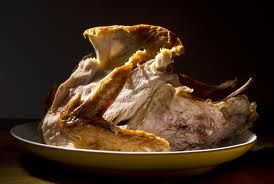 I know by tonight you will be sick if looking at the remnants of dinner, especially that turkey carcass because you aren’t done with it yet. I’m going to walk you through making turkey stock.
I know by tonight you will be sick if looking at the remnants of dinner, especially that turkey carcass because you aren’t done with it yet. I’m going to walk you through making turkey stock.
First you will need a big pot, I mean big like the one you use to cook spaghetti big, at least big enough to hold the turkey carcass and cover it wiht water. Mmmm, say about 8 quarts big. I know you have one somewhere.
Next your going to peel an onion, slicing off the top but leaving the stem part intact. Cut it in half through the stem. Gather some whole carrots and a few celery stalks (don’t cut off the leaves that’s where the most flavor is). Peel some garlic, as much as you’d like (we like a lot) but at least two cloves, leaving it whole. Take some of the herbs that you used to season the turkey with and three or four bay leaves and set it aside in a bowl for a minute.
Now, put the turkey in the empty pot to make sure it fits. If it doesn’t you have a couple of choices the easiest of which is to cut the carcass into sections so it fits into the pot you have. Now that it fits, put it on the stove and fill it with cold water using a pitcher (this gets heavy that’s why you’re dong it this way), covering the turkey . Add all the veggies, cover and bring to a full boil. Turn down the heat and let it simmer for about 3 or 4 hours, stirring occasionally and scraping the loose meat off the bones.
With most of the meat off the bones, remove the bones with a large slotted spoon or scoop and discard the bones. If it ‘s cold enough out side where you are, put the pot outside to cool. If it’s cold enough the fat which will float to the top will solidify and can be easily removed with a spatula.
Now strain the stock through a sieve or cheese cloth. Discard all those vegetables, the flavor is now all in the stock. Add new vegetables; chopped carrots, cubed potatoes, thinly sliced celery, soup greens such as kale, collards, chopped savoy cabbage or escarole, sliced onions, fresh herbs, and last but not least, pasta.
If you have a lot of stock, it can be frozen. I save the pint and quart plastic containers from the Chinese take out. They are also useful to put chicken and meat bones so my talented cats can’t get into them. Bones are not good for kitties.
The stock is also great for making Risotto with Wild Mushrooms. You’ll need

* about 8 cups of stock. If you don’t have enough turkey from your stock, College Inn makes a very good Turkey broth but it won’t be as good as yours.
* 2 cups of Risotto or Arborio Rice
* about 3 tbsp of Olive Oil
* 3 tablespoons of butter, unsalted
* 1 pound of fresh wild mushrooms such as portobella, crimini (baby portabella) or shiitake. I like shiitake best but usually use half and half. The mushrooms should be cleaned with a soft paper towel or soft brush. I have a soft brush just for mushrooms. I also hae a truffle slicer. 😉
* 2 tablespoons fresh tarragon leaves, chopped, or 1 tbsp dried
* 2 tablespoons fresh flat leaf (Italian) parsley, the other parsley, curly, is very rarely used in cooking. Its mostly a garnish.
* 2 large shallots chopped or a small onion
* 2 cloves of garlic, chopped.
* 1/2 cup dry white wine, something you would drink with the risotto.
* 2 tablespoons of fresh grated Parmesan cheese
Heat the broth in a sauce pan and keep it warm over low heat.
Heat two tablespoons olive oil in a large skillet and add the garlic. Fry until it just begins to color, then add the mushrooms and tarragon. Season to taste with salt and pepper and cook, stirring frequently, for about 20 minutes.
Meanwhile, heat two tablespoons butter in a separate skillet. Soften the shallots in the butter. Add the rice and saute for a couple of minutes, stirring, so the rice becomes coated with the butter. Add the wine and bring to a boil. When it has evaporated, add one-half cup of the hot chicken stock.
Keep adding the hot broth, one-half cup at a time, to the rice. Continue until the rice has absorbed nearly all the liquid. The rice is done when it is creamy, but al dente.
Stir in the remaining butter, the mushrooms and the Parmigiano Reggiano. Mix gently, garnish with a few leaves of tarragon and serve.
Bon Appetit!
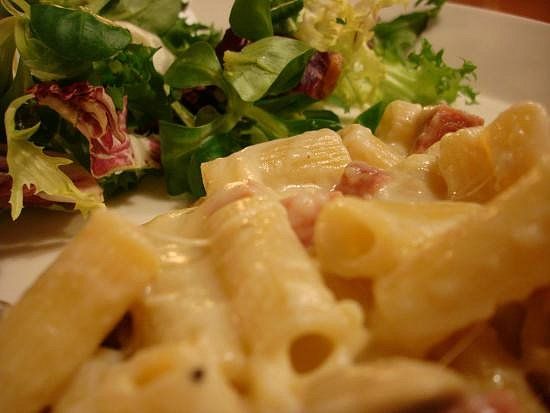 In case you still have a few slices of that ham left and are truly sick of ham sandwiches, don’t let it go to waste. Here’s an easy recipe that can make use of those last few slices.
In case you still have a few slices of that ham left and are truly sick of ham sandwiches, don’t let it go to waste. Here’s an easy recipe that can make use of those last few slices.
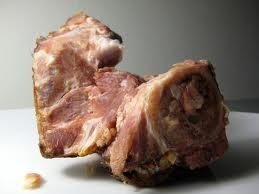 The holiday is over, besides the candy, you most likely have a refrigerator full of leftovers and one of them may be a ham bone. Don’t throw it out just yet, there is still another use for it, soup. Served with a salad and a hearty bread, these soups make a hearty, nutritional meal meal that is also budget conscious. Accompanied by a good beer, this is real comfort food on a chilly Spring evening.
The holiday is over, besides the candy, you most likely have a refrigerator full of leftovers and one of them may be a ham bone. Don’t throw it out just yet, there is still another use for it, soup. Served with a salad and a hearty bread, these soups make a hearty, nutritional meal meal that is also budget conscious. Accompanied by a good beer, this is real comfort food on a chilly Spring evening. 1 lb. dry navy beans
1 lb. dry navy beans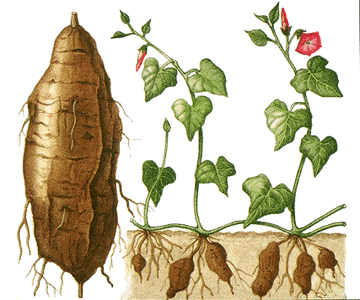 I love sweet potatoes and not just at Thanksgiving. I like them baked, boiled and mashed and dipped in tempura batter and fried. They are great in breads and baked desserts. They are very nutritional, an excellent source of vitamin A and a good source of potassium and vitamin C, B6, riboflavin, copper, pantothetic acid and folic acid. Sweet potatoes are native to Central America, grown in the Southern US states since the 16th century and are in the same family of plants as Morning Glories. The plant is a trailing vine with a large tuberous root.
I love sweet potatoes and not just at Thanksgiving. I like them baked, boiled and mashed and dipped in tempura batter and fried. They are great in breads and baked desserts. They are very nutritional, an excellent source of vitamin A and a good source of potassium and vitamin C, B6, riboflavin, copper, pantothetic acid and folic acid. Sweet potatoes are native to Central America, grown in the Southern US states since the 16th century and are in the same family of plants as Morning Glories. The plant is a trailing vine with a large tuberous root.
 I was raised by the sea and seafood has been a main part of my diet. When I was a kid, my Dad and I spent weekends at the beach nearly year round. We would catch out own bate, fish, dig for clams and set crab traps near the sea wall that lined the inlet. That was back when the water was clean. now all of my seafood comes from the local supermarket that has an excellent department and a manager that is quite knowledgeable.
I was raised by the sea and seafood has been a main part of my diet. When I was a kid, my Dad and I spent weekends at the beach nearly year round. We would catch out own bate, fish, dig for clams and set crab traps near the sea wall that lined the inlet. That was back when the water was clean. now all of my seafood comes from the local supermarket that has an excellent department and a manager that is quite knowledgeable. 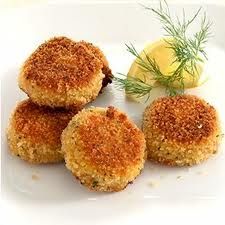
 Ingredients:
Ingredients: Ingredients:
Ingredients: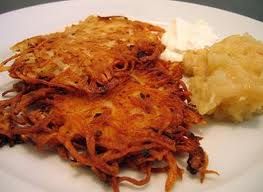 It isn’t Hanukkah without Potato Latkes, those wonderful, crispy pancakes of shredded potato and onion served with apple sauce. It’s lot easier than when I was growing up in the 50’s. Back then we had to shred them with a metal grater that often resulted in some shredded knuckles, too. Food processors have saved a lot of knuckles and teary eye from shredding the onion.
It isn’t Hanukkah without Potato Latkes, those wonderful, crispy pancakes of shredded potato and onion served with apple sauce. It’s lot easier than when I was growing up in the 50’s. Back then we had to shred them with a metal grater that often resulted in some shredded knuckles, too. Food processors have saved a lot of knuckles and teary eye from shredding the onion.  I know by tonight you will be sick if looking at the remnants of dinner, especially that turkey carcass because you aren’t done with it yet. I’m going to walk you through making turkey stock.
I know by tonight you will be sick if looking at the remnants of dinner, especially that turkey carcass because you aren’t done with it yet. I’m going to walk you through making turkey stock.
 Now that we are done with cooking directions for the big day, time to pick the beverage that will not just accompany this spectacular meal but compliment the main course, the sides and deserts.
Now that we are done with cooking directions for the big day, time to pick the beverage that will not just accompany this spectacular meal but compliment the main course, the sides and deserts. I never went to cooking school or took home economics in high school, I was too busy blowing up the attic with my chemistry set. I did like to eat and eat stuff that tasted good and looked pretty, plus my mother couldn’t cook to save her life let alone mine and Pop’s, that was her mother’s venue. So I watched learned and innovated. I also read cook books and found that cooking and baking where like chemistry and physics. I know, this is Translator’s territory, but I do have a degree in biochemistry.
I never went to cooking school or took home economics in high school, I was too busy blowing up the attic with my chemistry set. I did like to eat and eat stuff that tasted good and looked pretty, plus my mother couldn’t cook to save her life let alone mine and Pop’s, that was her mother’s venue. So I watched learned and innovated. I also read cook books and found that cooking and baking where like chemistry and physics. I know, this is Translator’s territory, but I do have a degree in biochemistry.
Recent Comments